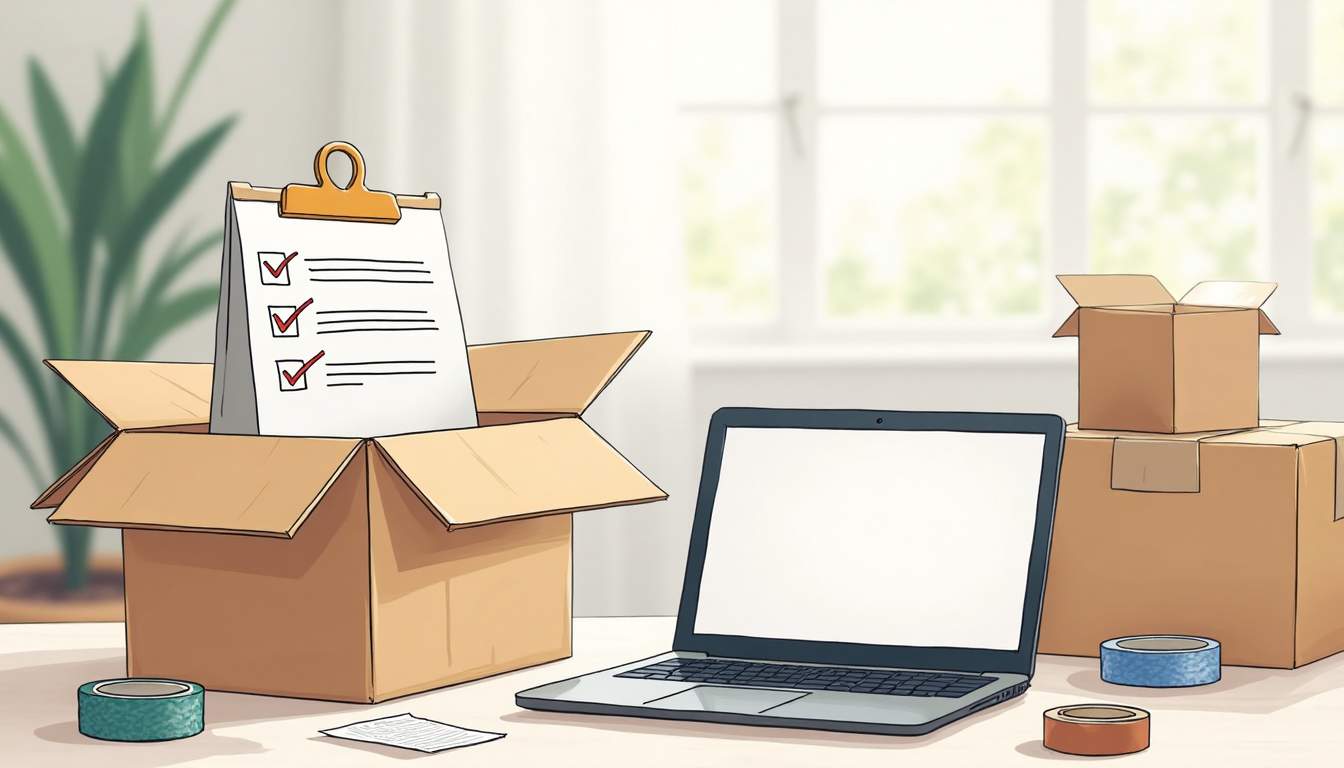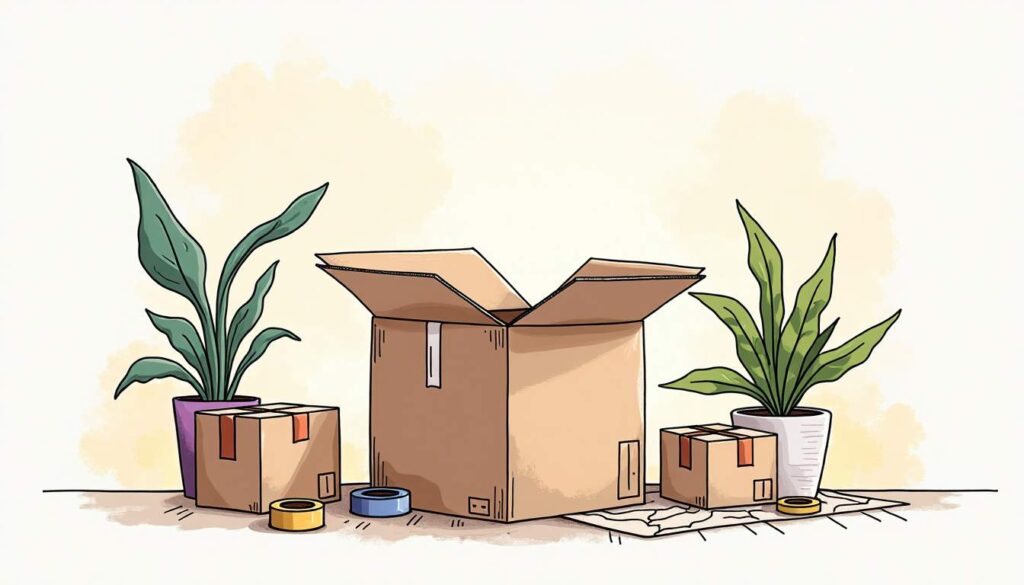Moving to a new home can be an exciting adventure, but it often comes with its fair share of stress and challenges. Whether you’re relocating across town or across the country, careful planning and organization are key to making the process as smooth as possible. This comprehensive guide will walk you through every step of your move, offering practical tips, expert advice, and useful resources to help you transition seamlessly into your new space.
Planning Your Move: The Foundation for Success
Successful moves start well before the moving truck arrives. Proper planning can save you time, money, and frustration, so it’s important to begin early and stay organized throughout the process.
Start Early and Create a Timeline
Experts recommend beginning your moving preparations at least six to eight weeks before your moving date. This timeline allows you to tackle tasks methodically without feeling overwhelmed. Start by creating a detailed moving checklist that breaks down your responsibilities week by week. Include important deadlines such as canceling utilities, notifying your landlord or mortgage company, and scheduling movers.
For example, by the six-week mark, you should have started sorting belongings and researching moving companies. By four weeks out, begin packing non-essential items and confirm your moving date with the movers. A clear timeline helps keep everything on track and reduces last-minute surprises.
Budgeting for Your Move
Moving can be expensive, so setting a realistic budget is crucial. According to the American Moving & Storage Association, the average cost of a local move is around $1,250, while long-distance moves can average upwards of $4,300. These costs vary depending on distance, volume of belongings, and additional services like packing or storage.
To avoid unexpected expenses, research moving companies thoroughly and get multiple quotes. Don’t forget to budget for packing supplies, utility deposits, cleaning services, and potential travel costs. Keeping a moving budget spreadsheet can help you track expenses and stay within your financial limits.
Packing Like a Pro: Protecting Your Belongings
Packing is often the most time-consuming part of moving, but with the right strategies, it can be manageable and even satisfying.
Declutter Before You Pack
Moving is the perfect opportunity to declutter and simplify your belongings. The less you have to move, the easier and cheaper your move will be. Sort items into categories: keep, donate, sell, or discard. Hosting a garage sale or using online marketplaces like Facebook Marketplace or Craigslist can help you sell unwanted items and offset moving costs.
Donating usable items to local charities not only lightens your load but also benefits your community. Remember, packing fewer things means less stress and more space in your new home.
Gather Quality Packing Supplies
Investing in sturdy packing materials protects your belongings during transit. Stock up on various sizes of boxes, packing tape, bubble wrap, packing paper, and markers. Specialty boxes for fragile items like dishes and electronics can prevent damage.
Many moving companies offer packing kits, or you can find supplies at home improvement stores. Avoid using old newspapers for wrapping as the ink can transfer onto your items. Instead, opt for clean packing paper or bubble wrap for delicate objects.
Packing Tips for Efficiency and Safety
Start packing non-essential items early, such as seasonal clothing, books, and decor. Label each box clearly with its contents and the room it belongs to in your new home. This will make unpacking much easier and faster.
When packing heavy items like books, use smaller boxes to keep them manageable. Place heavier items at the bottom and lighter ones on top to avoid crushing. Wrap fragile items individually and fill empty spaces with packing paper or bubble wrap to prevent shifting.
Keep important documents, valuables, and essentials like medications in a separate, easily accessible bag that you carry with you during the move.
Choosing the Right Moving Company
Hiring professional movers can alleviate much of the physical and logistical burden of moving, but selecting the right company requires careful consideration.

Research and Verify Credentials
Start by researching local and national moving companies. Look for reviews on trusted websites like the Better Business Bureau, Yelp, and Google. Verify that the company is licensed and insured, especially for long-distance moves. For interstate moves, check that they have a valid USDOT number from the Federal Motor Carrier Safety Administration (FMCSA).
Beware of red flags such as unusually low estimates, lack of a physical address, or reluctance to provide written contracts. Transparent communication and professionalism are signs of a reputable mover.
Get Multiple Estimates and Understand Pricing
Request in-home or virtual estimates from at least three moving companies to compare pricing and services. Understand how they calculate costs—whether by weight, volume, or hourly rates—and ask about additional fees for stairs, packing, or long carries.
Some movers offer binding estimates, which guarantee the quoted price, while others provide non-binding estimates that can change. Clarify these details upfront to avoid surprises on moving day.
Consider Additional Services
If you prefer to minimize your workload, many moving companies offer packing, unpacking, and storage services. While these add to the cost, they can save time and reduce stress. Evaluate your budget and needs to decide which options make sense for you.
Moving Day: Staying Organized and Calm
The big day can be hectic, but a calm and organized approach will help everything go smoothly.
Prepare a Moving Day Essentials Kit
Pack a bag with everything you’ll need on moving day and the first night in your new home. Include items like snacks, water, phone chargers, important documents, toiletries, a change of clothes, and basic tools. Having these essentials on hand prevents frantic searching amid the chaos.
Communicate Clearly with Movers
Be available to answer questions and provide directions to the movers. Walk through your home with them before loading to point out fragile items or special instructions. Keep a copy of the moving contract and inventory list handy for reference.
Once the truck is loaded, do a final walkthrough to ensure nothing is left behind. Double-check closets, cabinets, and storage areas.
Protect Your New Home
Before unloading, prepare your new home by clearing pathways and protecting floors with drop cloths or cardboard. This helps prevent damage during the move-in process. Direct movers on where to place boxes and furniture to streamline unpacking.
Settling In: Making Your New House a Home
After the move, the real work of settling in begins. Taking a thoughtful approach can help you feel comfortable and organized quickly.
Unpack Strategically
Start by unpacking essentials such as kitchen items, bedding, and toiletries. Focus on one room at a time to avoid feeling overwhelmed. Setting up your bedroom first ensures you have a restful space to retreat to after a long day.
Take breaks and pace yourself—unpacking doesn’t have to be completed in a single day. Involve family members or roommates to share the workload and make the process more enjoyable.
Update Your Address and Utilities
Notify the post office of your new address to forward mail. Update your address with banks, insurance providers, subscriptions, and any other important contacts. Set up or transfer utilities such as electricity, water, internet, and cable to avoid service interruptions.
Explore Your New Neighborhood
Familiarizing yourself with your new community can ease the transition. Locate nearby grocery stores, pharmacies, healthcare providers, schools, and recreational areas. Introduce yourself to neighbors and consider joining local community groups or social clubs to build connections.
Additional Tips for a Stress-Free Move
Beyond the basics, a few extra considerations can make your move even smoother.
Take Care of Your Pets
Moving can be stressful for pets. Keep them in a quiet, secure area during packing and moving to prevent escape or injury. On moving day, transport pets in a comfortable carrier or vehicle and maintain their regular feeding and exercise routines as much as possible.
Stay Healthy and Hydrated
Moving is physically demanding. Drink plenty of water, eat nutritious meals, and get enough rest before and after moving day. Avoid overexertion and ask for help when lifting heavy items.
Keep Important Documents Safe
Gather all essential documents such as leases, contracts, medical records, and identification in a dedicated folder. Carry these with you during the move rather than packing them in boxes to prevent loss.
Conclusion
Relocating doesn’t have to be a stressful ordeal. With careful planning, smart packing, and the right support, moving can be a positive and even enjoyable experience. Remember to start early, stay organized, and take time to care for yourself throughout the process. Your new home awaits, and with these tips, your transition will be as smooth as possible.




